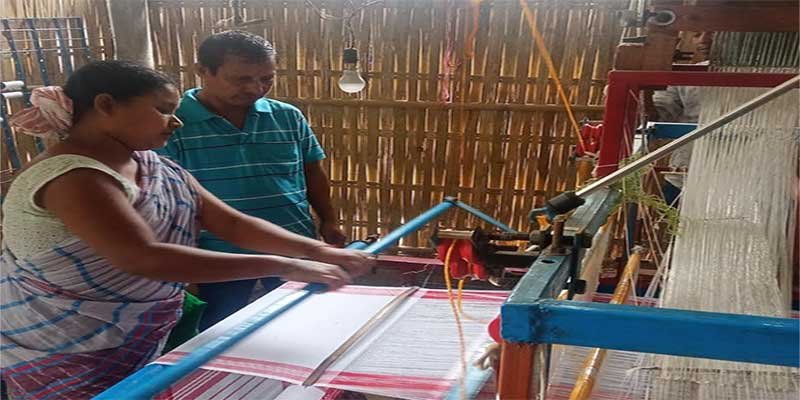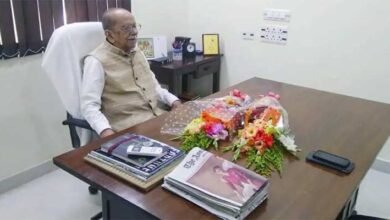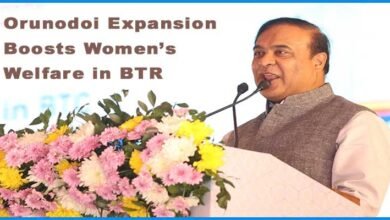Assam: Women from human-elephant conflict affected villages trained in handloom techniques to supplement income
Training in skills, such as handloom techniques, can help the women reduce their dependence on traditional livelihood options like paddy cultivation, horticulture etc.

GUWAHATI- One of India’s foremost biodiversity conservation organisations, Aaranyak organised two-day handloom training workshops for community women in HEC-affected villages of Assam in partnership with the British Asian Trust and with support from Darwin Initiative to provide additional livelihood options for women to help them offset some of the losses incurred by the conflict with wild elephants.
Training in skills, such as handloom techniques, can help the women reduce their dependence on traditional livelihood options like paddy cultivation, horticulture etc. that have become unsustainable in HEC-affected areas. Availability of sustainable alternative livelihood fosters better coexistence with wild elephants, improves community well-being and contributes towards biodiversity conservation, according to a communiqué from Aaranyak.
Assam: Tiku, rescued endangered Hargila, set free by Aaranyak team
“We learnt a range of handloom techniques during the two-day training. It has encouraged me to think seriously about taking up handloom as an alternative livelihood option. In our area, we are frequently in conflict with wild elephants, which often results in extensive damage to crops, our basic and primary source of livelihood,” said Joshna Taye, an elderly woman from Sagunpara village in Jorhat district of Assam, a region greatly affected by human-elephant conflict (HEC).
She had attended the training workshop on handloom operations held in her village recently. Another such training workshop was held in Hatishal village on July 20 and 21. Nabanita Kalita, a middle-aged lady from another HEC-affected village – Bejorsinga of Jorhat, expressed her happiness with the training experience and usefulness of handloom operations and hoped that it would help her supplement her income.
“More than thirty women from HEC-affected areas attended the workshop held in Segunpara village conducted with support from Darwin Initiative and over twenty-five women attended a workshop conducted in the community hall of Hatishal village for women from Hatishal and Bejorsinga villages. A well-known handloom expert in the area, Nandeswar Deka, taught participants about in-depth handloom applications”, said Aaranyak official Zakir Islam Borah.
The training workshops were coordinated by Aaranyak’s senior official Niranjan Bhuyan with the assistance of Village Champions Sunil Taye, Makhon Kalita, and Sabita Malla. Other Aaranyak officials Bidisha Bora, Rimpee Moran, Ananta Dutta, Lakhinath Taid, Chiranjeev Kalita, Afride Rahman and Jiaur Rahman helped making the training a success.
Based on the survey results, weaving as a means of supplementing livelihood was preferred by many village women. Traditionally weaving is practised in the households, mostly by women to weave daily use clothes.
Aaranyak conducted a series of weaving trainings for these women who are affected by human-elephant conflict. In Majuli’s Halodhibari village 17 women received the training on 23rd July while at Gazera and Jaborchuk Kathoni, 32 women participated for the weaving training on 24th July. At Konwarbam and Tanti Pathar of Dibrugarh district, 20 and 13 women were trained to develop their weaving skill.
In Sibsagar, weaving trainings were organised on 30th and 31st July, wherein 23 and 30 women were trained respectively. Each woman was provided with 5 kg of cotton yarns at the end of the training.









